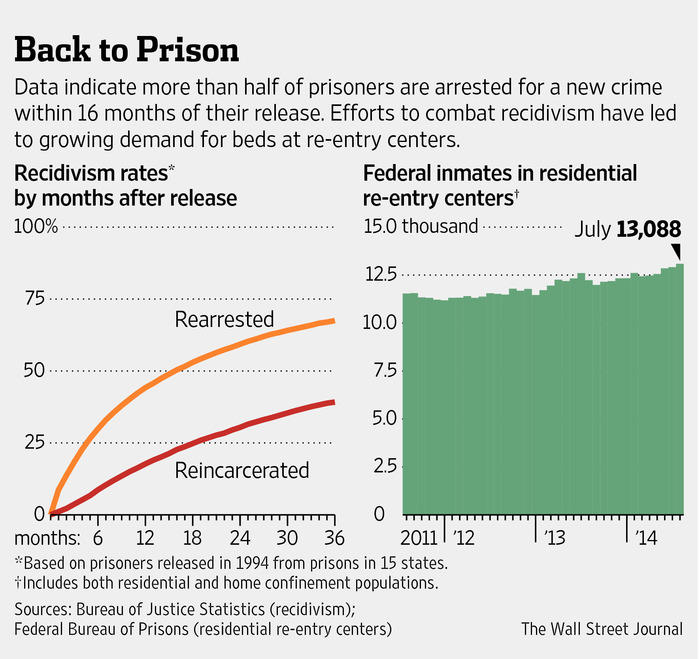The current penal system used in the United States is flawed greatly in terms of its ethical and practical foundations. The social justice philosophy requires that the legal framework should contribute to correcting the behavioral patterns of criminals as opposed to merely punishing them consistently for the entire period of their service (Muffitt par. 4). However, the implication of the above concept leaves much to be desired and does not allow for the rehabilitation of the prisoners. For the American penal system to work efficiently, the basic principles of social justice and the concept of rehabilitation should be incorporated into its design, therefore, allowing prisoners to integrate back into the society successfully upon serving their time.
As the recent statistical data says, the cases in which rehabilitation techniques are adopted feature fewer instances of repeated offence commissions (Aborn et al. par. 6). It should be borne in mind, though, that a significant amount of the U.S. population has a very strong stance on the subject matter. According to a recent report, 2/3 of the U.S. citizens believe that the criminal system should be geared toward providing a punishment of the appropriate magnitude to the prisoners (Lim par. 3). The people surveyed, however, are not concerned with the further evolution of the criminals and the possible threat of them returning to their illegal activities.
One must mention, though, that roughly 67% of the American population believe that the current system of justice needs to be focused on providing criminals with an opportunity to become a functional part of the society (Lim par. 3). Therefore, there are certain chances for the redesign of the current justice system. Using the support of the specified members of the population, one is likely to improve the current legal system significantly. Particularly, the premises for creating a sustainable system that will help promote essential moral and ethical values to criminals can be designed.

One must admit, though, that the above task is fraught with numerous challenges, the financial ones being the primary cause of concern. It is unlikely that taxpayers are going to be satisfied with the idea of their taxes being used for providing additional opportunities for criminals. The present-day data concerning the percentage of prisoners worldwide (Terzi par. 4) will have to be included in the range of arguments to be provided to the target denizens of the population. As a result, a comprehensive rehabilitation program aimed at correcting the behavioral patterns of the prisoners can be launched.
Therefore, it could be suggested that a large awareness program should be carried out so that the significance of the above measures could become evident to every single member of the population. In other words, the very fabric of the social justice needs to be reconstructed for the principle of rehabilitation to be viewed as a necessity (Russell 11).
By incorporating the concept of rehabilitation into the present-day legal system of the United States, one is likely to create prerequisites for criminals to avoid being dragged into illegal activities after being released from prison. Moreover, the concept of rehabilitation as opposed to the idea of consistent punishment aligns with the foundational principles of humanism and social justice. Therefore, the above philosophy needs to be included into the American penal system so that the latter could be changed. As soon as the principle of rehabilitation becomes the basis for the modern legal system, a significant improvement for both the imprisoned and the society can be expected.
Works Cited
Aborn, John, Annie van den Toorn, John Hockin, Scott Jordon, Man Nayvelt, and Michael Finkelstein n. d. The California Prison and Rehabilitation System. Web.
“Back to Prison.”. 2014. Web.
Lim, Jillian Rose 2014. Treatment vs. Punishment: Poll Finds Americans Prefer Rehab Over Jail For Drug Offenders. Web.
Muffitt, Eleanor. “The Old Debate: Punish Prisoners, or Rehabilitate Them?” The Telegraph. 2013. Web.
Russell, Craig. Alternatives to Prison: Rehabilitation and Other Programs. New York, NY: Mason Crest, 2013. Print.
Terzi, Matt. “Do We Want Prisons To Punish, Or To Rehabilitate?” Reverb Press. 2015. Web.